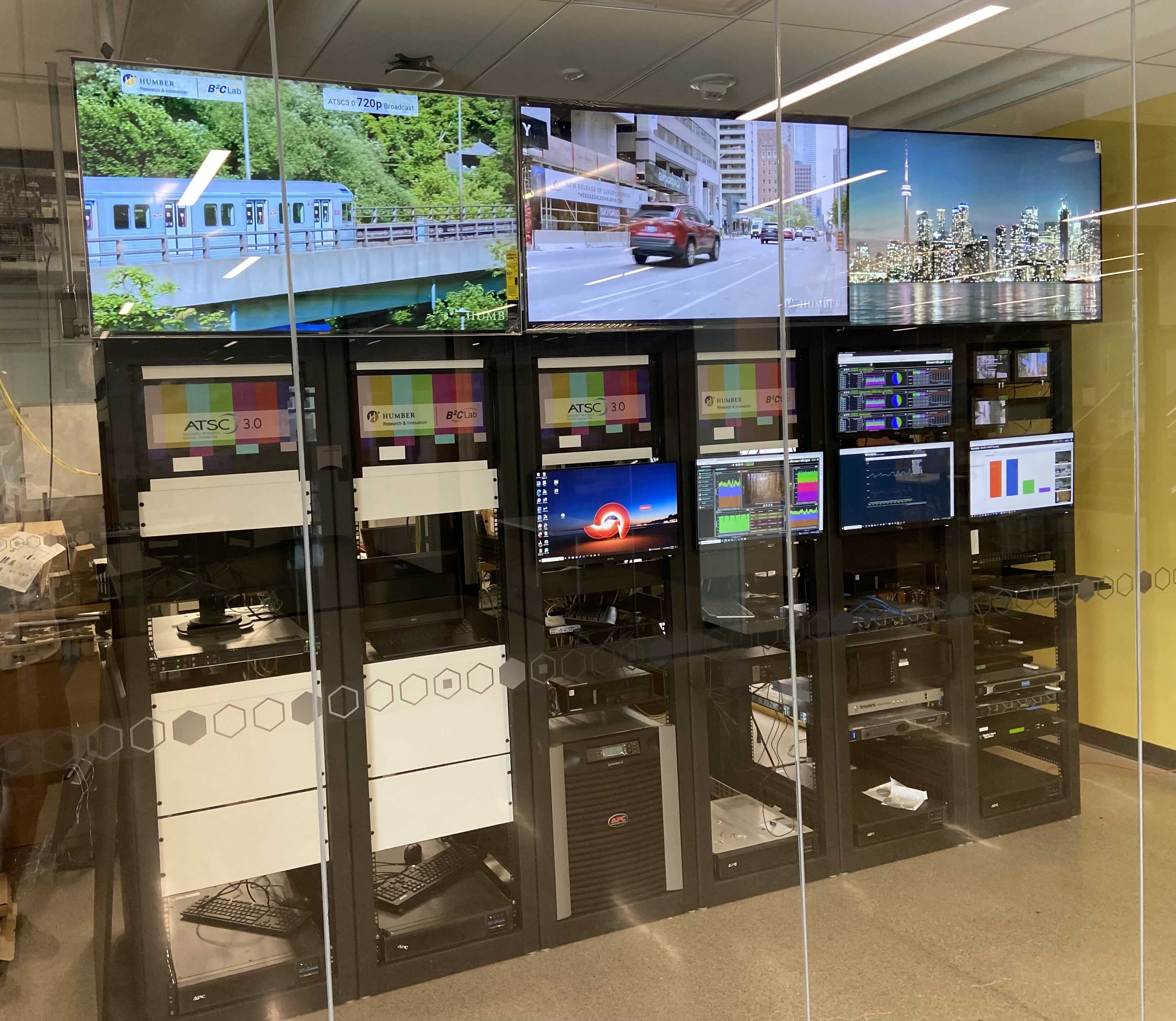
CINCINNATI—GatesAir, a subsidiary of Thomson Broadcast, has announced that it is one of several key suppliers supporting NextGen TV, aka ATSC 3.0 research, testing, and deployment within the Broadcast-Broadband Convergence B²CLab infrastructure at Humber College in Toronto.
The B²C Lab, which features six GatesAir Maxiva UHF transmitters was established as North America’s first 100% front-facing industry research lab to explore multi-sectoral applications of the ATSC 3.0 standard including convergence with 5G networks.
Its work includes active participation with industry stakeholders and ATSC 3.0 technical teams, including the Tower Network Implementation team (TN-IT5), whose aim is to connect broadcast transmission towers to form an IP and 5G-based scalable and configurable Inter-Tower Communications Network (ITCN). The lab’s work incorporates joint research and development efforts with the Communications Research Center in Ottawa, the University of the Basque Country in Bilbao, Spain, and the Electronics and Telecommunications Research Institute in Seoul, South Korea.
“ATSC 3.0 is the world’s most efficient one-to-many data delivery system, and we’re happy to be part of an auspicious global group of research scientists working together to advance NextGenTV and data delivery applications,” said Orest Sushko, director for the B²C Lab. “In Canada, we work with a variety of industry stakeholders that are interested in developing both television and non-television applications using the standard, which includes the deployment of datacasting services to support smart city initiatives offering public safety and first responder applications. Here in Toronto, we operate through Canada’s first ATSC 3.0 experimental/developmental license, and Humber College actively participated in the process of helping develop the necessary requirements for 3.0 experimental operation in Canada.”
Humber B²C Lab’s engineering manager, Willie Perez, has designed a unique OTA test bed that spans three tower sites to deliver NextGenTV services airing on UHF channels 22 and 28, with two GatesAir Maxiva transmitters at each site enabling content and IP data delivery. The configuration includes two UAXTE-3P-C, two UAXTE-2P-C, and two UAXTE-50 transmitters. The transmitters operate at low power (between 15 and 400 Watts TPO) and are well suited in leveraging ATSC 3.0’s physical layer to extend coverage from each tower site.
“This helps us optimize specific datacasting use cases where we don’t need to send a lot of data, but need to ensure that the data is very robust in its transmission properties,” said Sushko. “What we like about GatesAir is their ability to tailor a transmission solution that met our initial requirements while enhancing the overall functionality of our OTA testing services. GatesAir supports our development of new and novel applications using ATSC 3.0 in meaningful ways that will help foster long-term sustainability for the broadcast industry.”
The Humber B²C Lab will soon add a seventh Maxiva transmitter to a fourth ATSC 3.0 experimental site atop the CN Tower in downtown Toronto, which Sushko says will expand the lab’s reach of testing services to approximately 25 percent of the Canada’s marketplace. “GatesAir is helping us build a world-class ecosystem that allows us to undertake extensive testing with reliable performance, ensuring the best possible success,” said Sushko.
Further information about the Humber B²C Lab can be found at https://b2convergence.ca.







